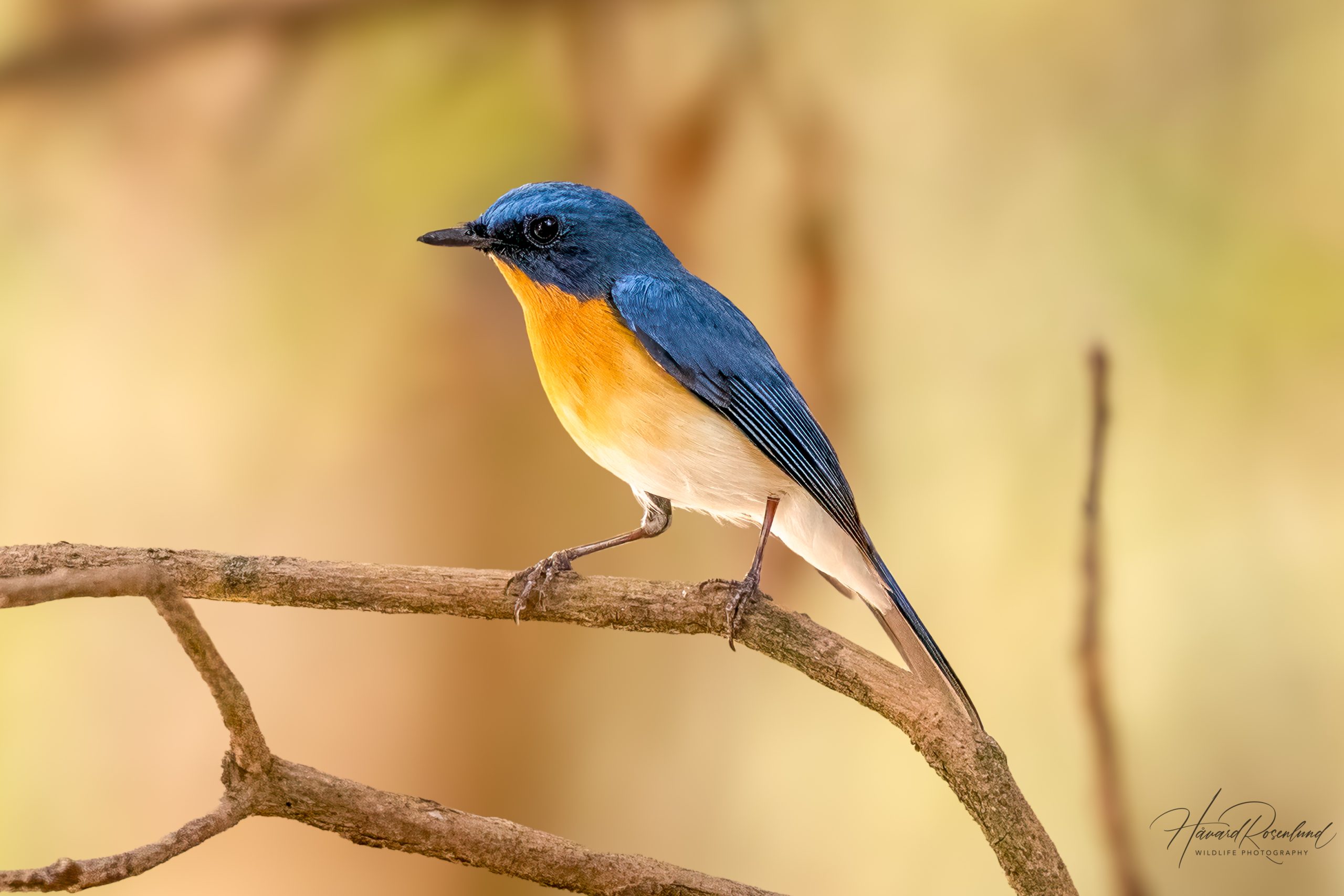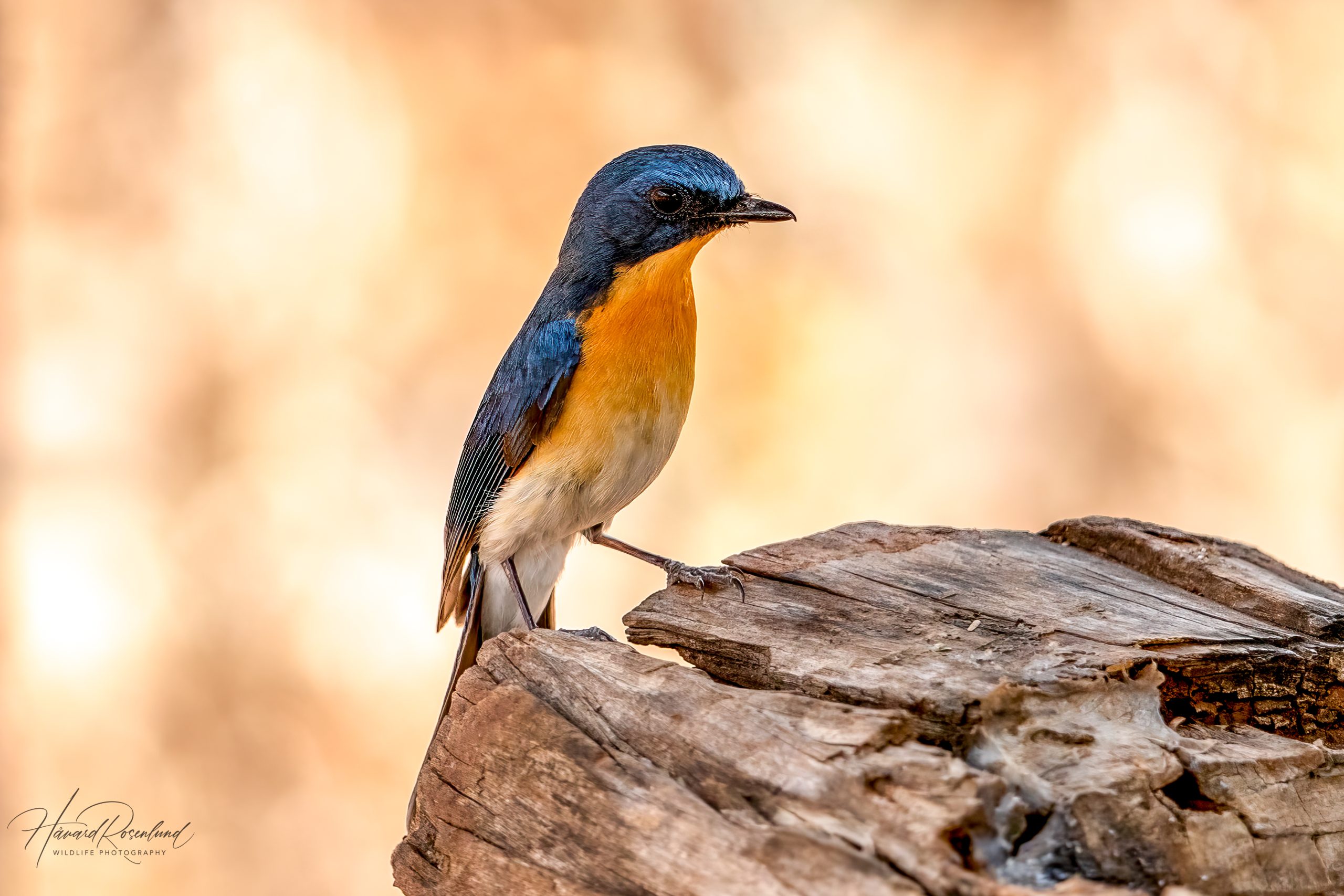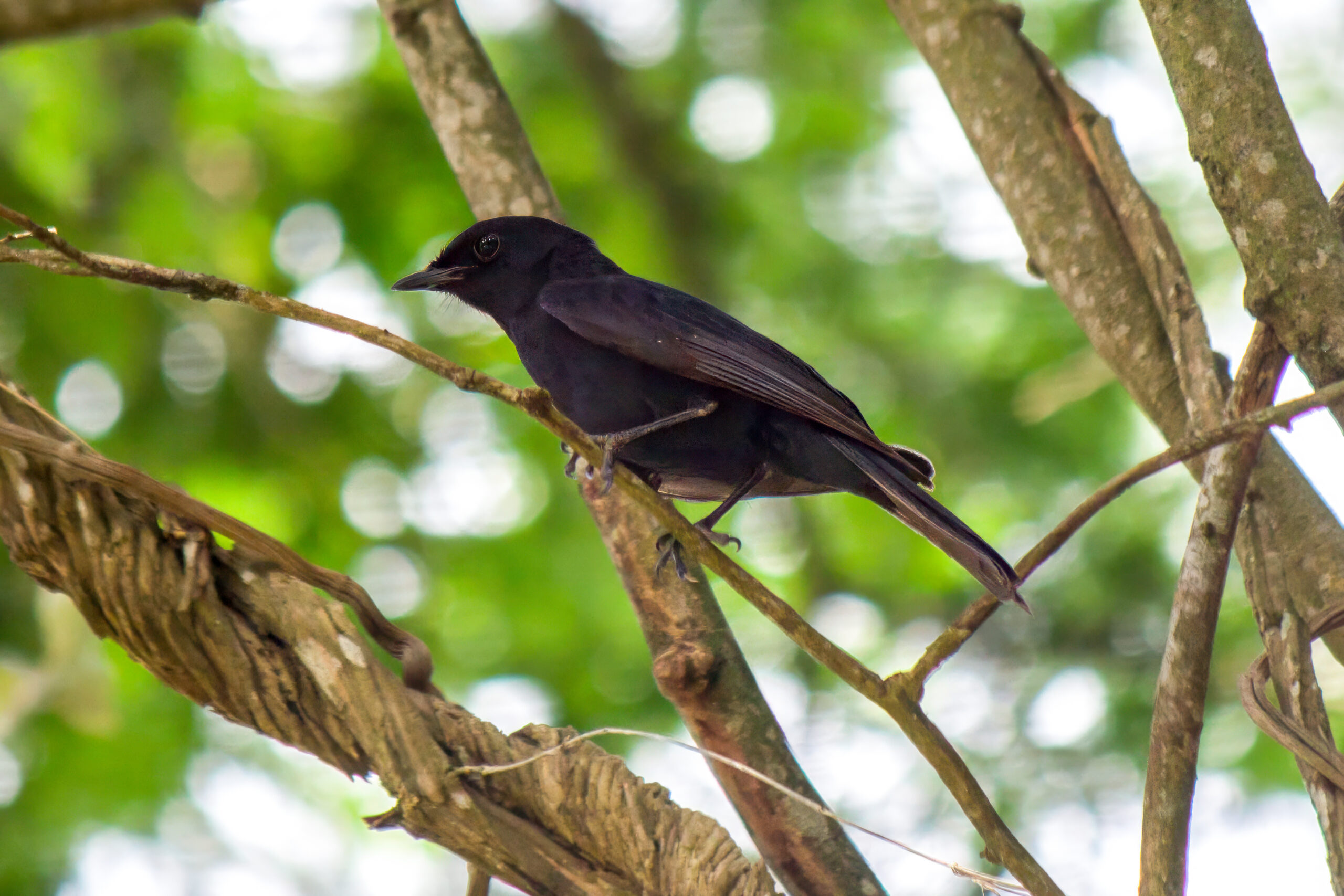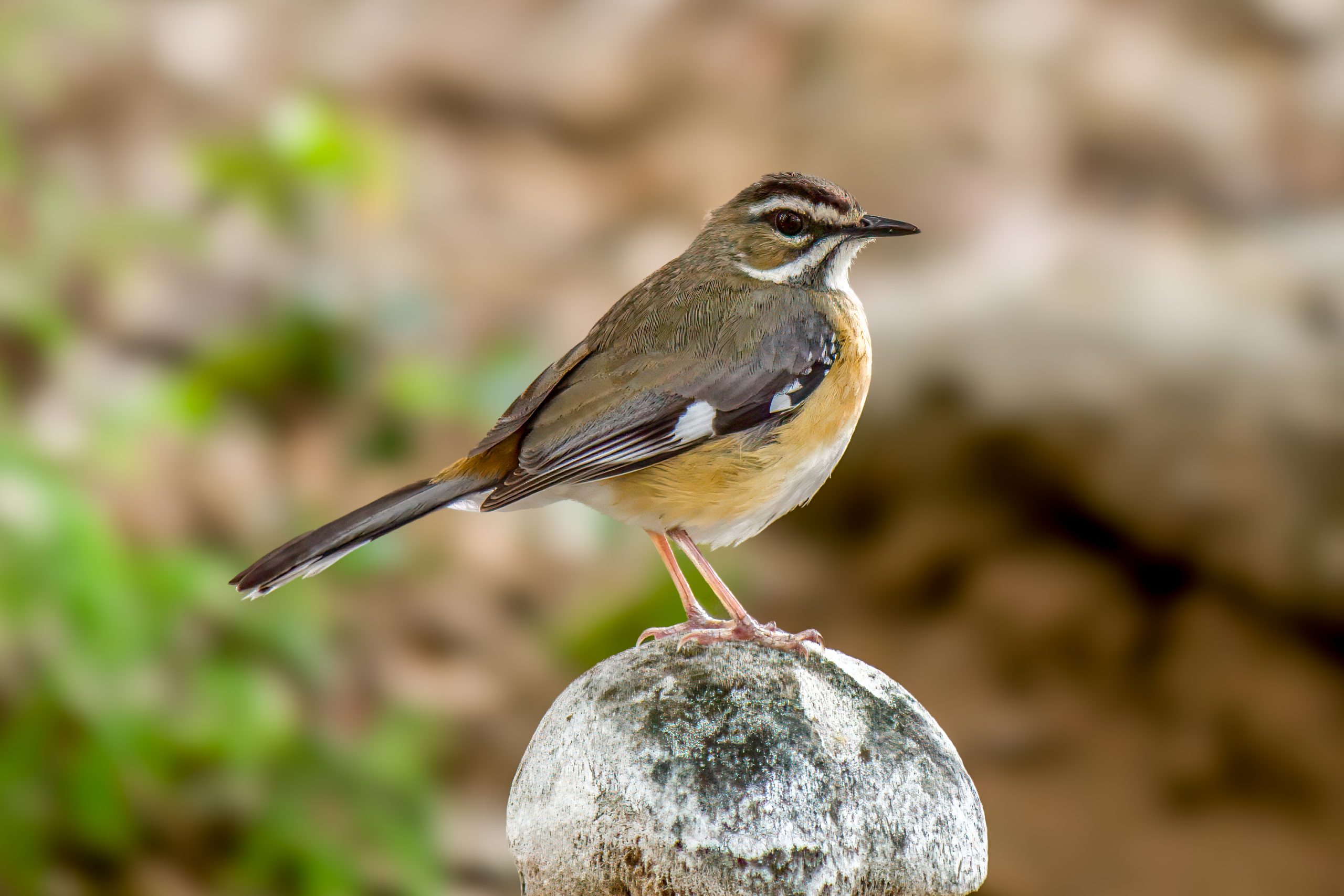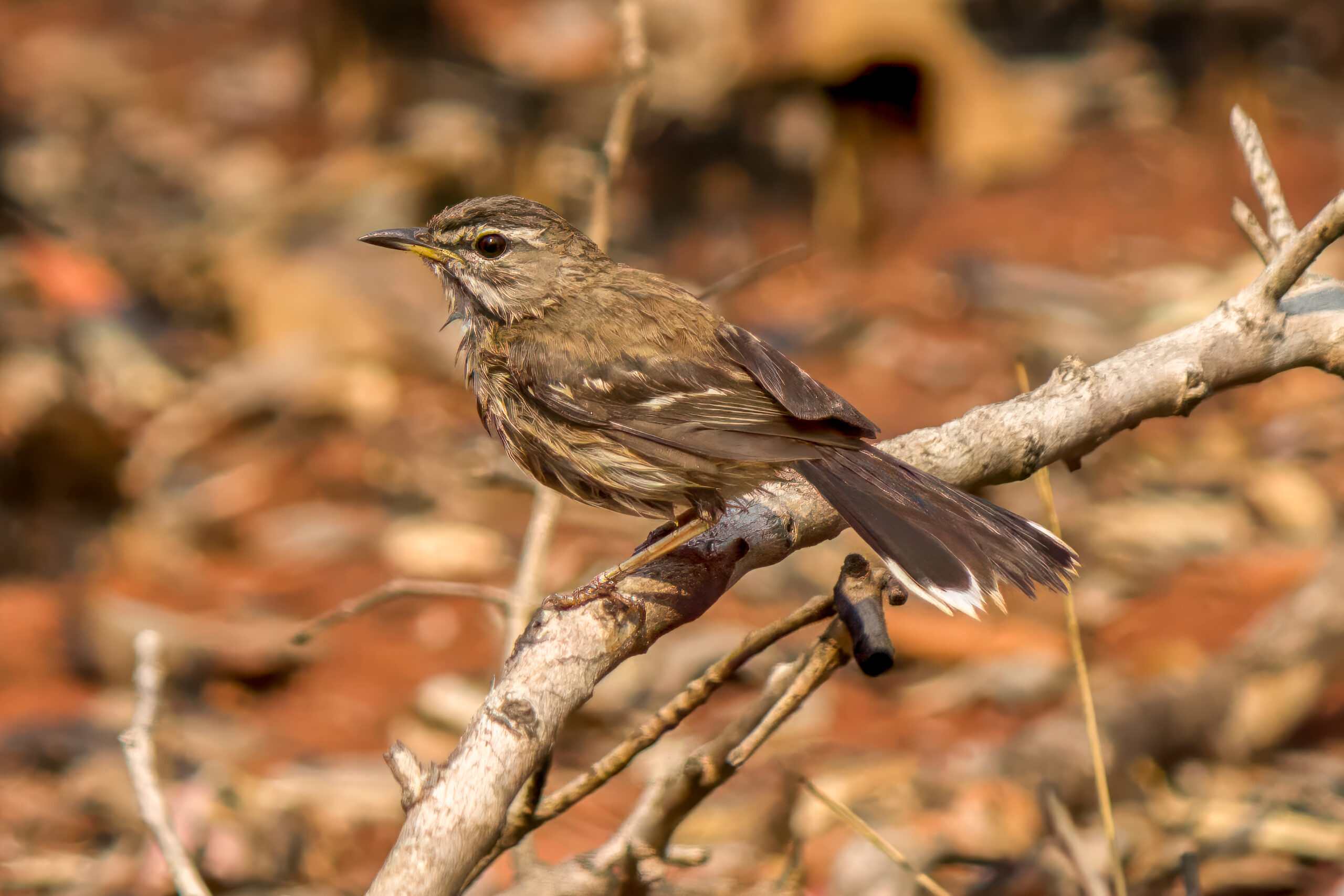Tickell’s Blue Flycatcher
(Cyornis tickelliae)
Description
The Tickell’s blue flycatcher (Cyornis tickelliae) is a small and colorful passerine bird found across the Indian Subcontinent, including Sri Lanka. It measures approximately 14–15 cm (5.5-5.9 in) in length, with a wingspan ranging between 20–25 cm (8-10 in). It weighs around 12–18 grams (0.42-0.63 oz). Adult males are characterized by a vibrant blue upper body, with an orange throat and breast, and a white belly. Females are generally duller blue, with paler orange underparts. This species is very similar to many Asian blue flycatchers, but its range does not overlap with most of these. One exception is the blue-throated blue flycatcher (Cyornis rubeculoides), from which it can be distinguished by the absence of a blue throat patch and a more extensive orange coloration on the chest.
Diet & habitat
The Tickell’s blue flycatcher inhabits a variety of forested environments, including deciduous and evergreen forests, as well as secondary growth and gardens. It is frequently found near water bodies and prefers lower to mid-elevation regions, though it can sometimes be seen in foothill forests. Its diet primarily consists of insects, including beetles, caterpillars, and other small invertebrates. The bird is an agile forager, often seen catching insects on the wing or gleaning them from foliage. It is known to sally forth from a perch to snatch prey mid-air, showcasing impressive aerial agility.
Nesting
Breeding season for the Tickell’s blue flycatcher varies by region but typically occurs from April to August. During this period, males display courtship behaviors, including singing and aerial displays, to attract females. Nesting occurs in tree cavities, natural crevices, or sometimes even in man-made structures. The nest is cup-shaped and constructed from twigs, grass, and leaves, often lined with finer materials. The female lays 3–5 eggs, which are incubated for about 12–14 days. Both parents participate in feeding the chicks, which fledge approximately 14–16 days after hatching.
Status
The Tickell’s blue flycatcher is currently listed as least concern by the IUCN Red List. It is relatively widespread and common throughout its range, and there are no major threats leading to a significant population decline. However, habitat loss due to deforestation and urbanization poses potential future risks to local populations.




